Turkey Season Transitions
I have seen a bunch of articles written over the years about the various stages of the wild turkey’s spring breeding. I have been watching this firsthand at the farm for twenty seasons now. I am going to give my thoughts on it. Remember that I am about 10 miles south of the Ohio River in the Northeast of Kentucky. What is going on in the southern part of the state is considerably different. Ohio’s season starts a week later than mine, so everything I say here is predicated on my location and my experience.
To begin, let me review what has been going on prior to breeding. For most of the year, turkeys tend to stay in single-sex groups. They eat and roost separately. The hens tend toward larger groupings than gobblers. I will see a flock of ten hens and whereas I will see perhaps 3-4 gobblers together. However, last fall I saw ten gobblers feeding out together. There will be intermittent gobbling and hen calls from the roost. Generally, the mornings are quiet. This pattern holds until late winter.
When the weather warms enough to trigger it, the turkeys bunch up. The single-sex flocks all come together for a few days. I have counted 75 individuals roosted in one hollow. After flydown, they rearrange themselves into mixed-sex groupings but will roost close together. This is when regular morning gobbling begins. Gobblers and hens fight for dominance. There is a lot of pecking and flogging going on. Gobblers will display, but the hens are not interested.
By the end of this phase, the turkeys have split into smaller and smaller flocks until the winter flock dissipates and the turkeys form their small breeding flocks of perhaps 1-2 gobblers and several hens. Once these flocks are established, breeding begins. The gobbler and hens will both sound off in the morning. After flydown, the flock will go quiet. The gobblers will breed the hens that are ready for it, and then go out looking for more. The hens will go off to lay their eggs. Once the gobblers have bred all the available hens, they will start gobbling again. It is at this time that they are most vulnerable.
In my experience, Kentucky’s Yute Season hits just after the winter flocks have broken up. Interest in coming to calls is not all that great. My sons never tagged a bird at flydown, but did manage to fill yute tags in the mid-to-late morning. It is in that week or two between the end of the Yute Season (first weekend in April) and the start of the KY Spring Gobbler season (around the 15th) that there are a few days where the gobblers go nuts at mid-morning. The use of turkey calls is still banned, but the gobblers will come to anything. I have had gobblers come running across a pasture to the sound of me moving my butt in the leaves. I can see why the state prohibits hunting gobblers during this phase. There would not be any real sport in it. However, I have had some interesting interactions with them. In 2020, I had gobblers twice try to pitch woo to my camo umbrella mike while I was getting audio for my podcasts.
This is a short-lived phenomena. Usually, sometime in the week before the Opener, somebody throws a bucket of water on all the flocks, or at least that is how it seems. What is going on is the peak of breeding. Every gobbler is able to keep a hen in sight most of the day. I’ve seen this called the Latency Phase, or the Henned-up Phase. Usually, this where things stand on the Saturday closest to the 15th of the month when Spring Gobbler Season starts. I have seen this phase end slightly before the Opener. I have seen it be delayed into the second weekend. However, there comes a day when gobblers will start to run out of hens and they will go in search of strange nookie. I have taken the bulk of my gobblers at flydown during this period.
Gradually, more and more hens are going off to nest. Mid-morning becomes more of an option. I usually know this phase has initiated, because I run into a hen as I am hiking out in late morning as she has come off the nest to feed. Latency is over and the next phase has begun.
I submit to you that there are maybe only a few days in a gobbler’s spring where he is going to be receptive to your calling. Some days, it is the weather that puts him off. Other days, he latches onto some hens and follows them around, and will only pay you a courtesy gobble when you call to him. It may be that your calls don’t interest him or he got flogged by jakes and fears he is going to get his butt kicked if he responds.
Within a week or two, this classic part of season is drawing to a close. Hens are sitting on their nests now. Some hens are still available. Some writers talk about gobblers beginning to haunt strut zones at this time. A strut zone is a place where a gobbler will visit each day gobbling, drumming, and displaying in hopes of luring a hen. They make themselves as visible as possible. There may be possibly gobblers waiting around as acolytes. A gobbler may stand off to the side in full strut, but not gobbling. In turn, he may have one or two jakes standing close at hand. These are common pairings. I see strut zone behavior in the afternoons a lot. If I get there early and setup and wait, the gob often shows up and gives me a floor show.
Although not mentioned in the literature, this is also the time of year when I have seen lone hens go somewhere obvious like a high point in a field and start a series of insistent yelping trying to locate a gobbler. There is a myriad of reasons why gobblers tend towards field edges right about then. For one thing, they are starting to get back on their feed. Foliage is becoming a factor. Sound is becoming muffled in the woods. Some guys resort to blinds and decoys. This is when I see 1-3 jakes following a gobbler around like the master and students.
At some point in all this, I have seen single gobblers or a gobbler with jake acolytes get into a behavior where they go plodding around my pastures only stopping to call down into every crevice of a hollow trying to get a hen to come up. Twice I’ve seen a gobbler making these circuits– more than a mile in total length from flydown until fly-up on a 3 hour round trip. This is the beginning of the end. Normally I see this behavior around the last weekend of season. By this time, my calling is down to mostly single clucks and feeding sounds. Rambunctious hen calls don’t seem to produce that much. We seldom take gobblers or jakes in May. The reason is that we’re hunting only 200 acres, and there are only so many birds to hunt. The gobs that might come to calls, have already done so and are resting comfortably in the freezer. Either that, or we have screwed up somehow, missed the bird, and now he’s running around the wiser from the experience.
Then it’s over. Season ends the first weekend of May, but the turkeys go on. Gobblers will continue to wander about looking for love. Hens that have had their nests fail will go out and breed with them. I have seen young poults in August, so I know there is activity. This usually happens when the weather in May is lousy. I have been told Gobblers will breed clear up to the 4th of July weekend around these parts. By June, I usually see my first poults. By October, they’re becoming 2/3 scale models of adults. By this time the gobblers have split off into their bachelor groups. Wash. Rinse, Repeat.
Current Events:
As y’all know, I spend the weekends prior to season recording the turkeys and making podcasts. Just so you have a gauge on where we stand in the progression, I wanted to give you an update on what I have been experiencing. I came back and opened up camp on 4/27-28. At that time, I could hear a very few gobbles at sundown. I related this in the Sons of Moto post.
The next weekend, I was out with my recording gear. I heard gobbling, but nothing on the property. This is normal. I sometimes go all the way to the week before season before hearing gobbling close at hand. I used to fret, but I don’t anymore.
Yesterday, I was out again. I heard 3 gobblers along Heartbreak Ridge, and a stupendous bit of flydown cackling from a hen, but all 4 events were too far off to get good audio and they were all one-off sounds. They were all distant from one another as well. What I can surmise is that we are not yet to the point where the big post-winter mega flocks are forming. However, the warm weather should bring it on soon.
This post has already been read 3759 times!
Views: 10
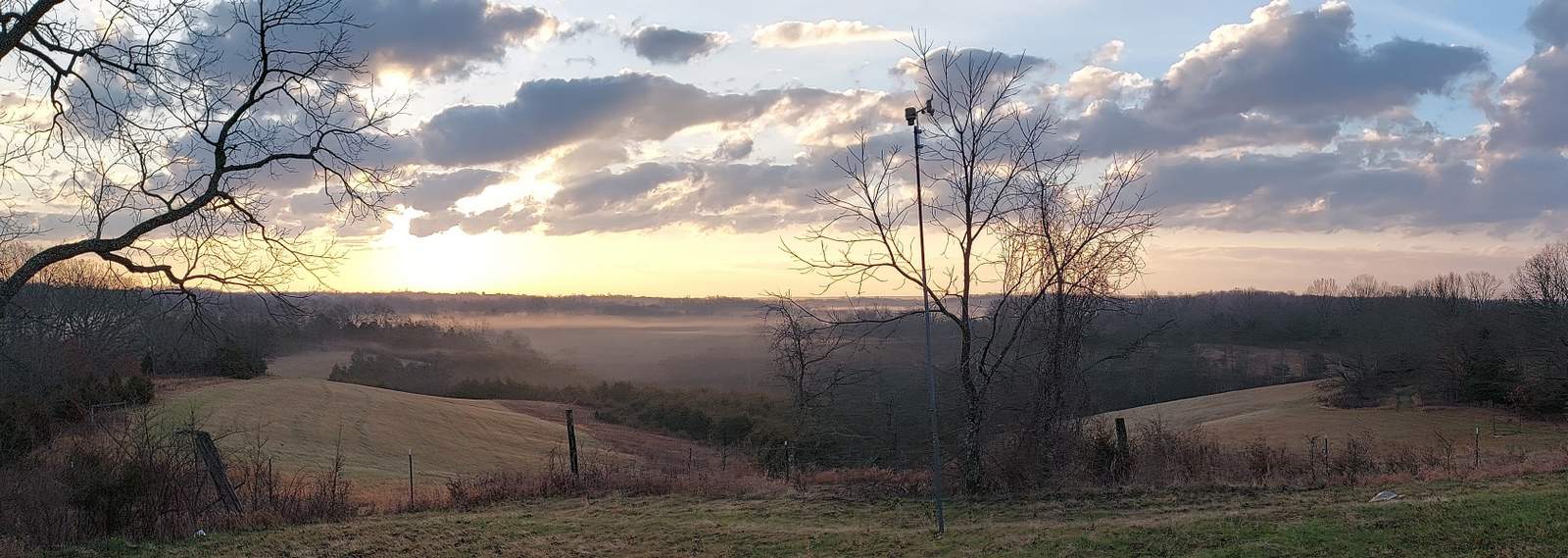
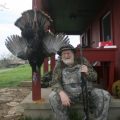
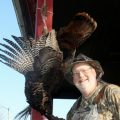

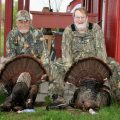
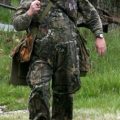
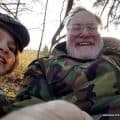
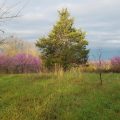
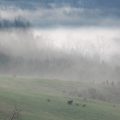
Comments
Turkey Season Transitions — No Comments
HTML tags allowed in your comment: <a href="" title=""> <abbr title=""> <acronym title=""> <b> <blockquote cite=""> <cite> <code> <del datetime=""> <em> <i> <q cite=""> <s> <strike> <strong>